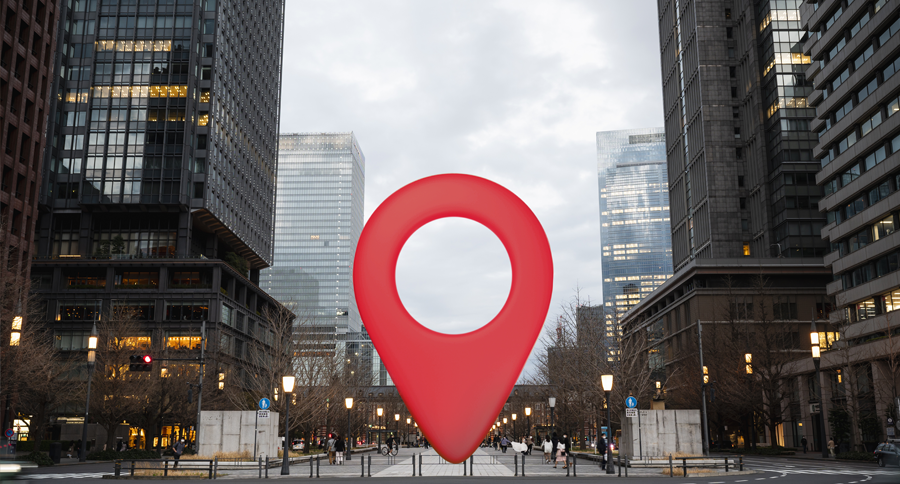
15 ต.ค. การจำลองสถานการณ์แบบ “What if Analysis” ด้วยพลังของ AI และ GIS
Posted at 17:27h
in Blog
ทุกวันนี้ ผู้บริหารในหลายๆ ธุรกิจต้องการตัดสินใจจากข้อมูลที่ดีที่สุด แต่บางทีการหาข้อมูลที่ต้องการก็ทำได้ยาก หรือค่าใช้จ่ายสูงเกินไป ตรงนี้เองที่การจำลองสถานการณ์เข้ามาช่วย ซึ่งเป็นแนวคิดที่มีมาตั้งแต่สมัยเริ่มต้นของการใช้คอมพิวเตอร์
ลองนึกถึงภารกิจ Apollo 13 เมื่อตัวยานเกิดปัญหา NASA ใช้คอมพิวเตอร์ในการคำนวณข้อมูลจากภารกิจ เพื่อหาทางช่วยให้ลูกเรือกลับโลกได้อย่างปลอดภัย แม้ในตอนนั้นคอมพิวเตอร์จะไม่เก่งเหมือนทุกวันนี้ แต่การใช้ข้อมูลก็ช่วยแก้ปัญหาได้ ปัจจุบัน การมีซูเปอร์คอมพิวเตอร์และข้อมูลมหาศาลช่วยทำให้อัลกอริทึมเก่งขึ้นมาก การจำลองสถานการณ์เลยเป็นที่แพร่หลาย ทั้งในวงการวิทยาศาสตร์และอุตสาหกรรมแถมยังง่ายขึ้นและแม่นยำมากขึ้นด้วยความก้าวหน้าของ AI
หนึ่งในวิธีการใช้ AI ที่เปลี่ยนแปลงวงการมากที่สุดคือการวิเคราะห์ข้อมูลทางภูมิศาสตร์ ด้วยการนำข้อมูลจากแผนที่มารวมกับการจำลองสถานการณ์ ธุรกิจต่างๆ จึงได้เห็นประโยชน์ชัดเจนขึ้น ทำให้การทำงานมีประสิทธิภาพและตัดสินใจได้แม่นยำกว่าเดิม การเพิ่มประสิทธิภาพห่วงโซ่อุปทาน ตัวอย่างชัดเจนคือการจัดการห่วงโซ่อุปทาน บริษัทใหญ่ที่ทำอุปกรณ์เครือข่ายแห่งหนึ่งได้สร้างโปรแกรมที่จัดการคำขอของสินค้าและวัสดุในกว่า 130,000 จุดให้กับลูกค้าทั่วโลก ถ้าลูกค้าคนไหนมีความต้องการด่วน ระบบก็จะช่วยให้ชิ้นส่วนและช่างที่เก่งๆ ไปถึงภายในสองชั่วโมง
เรื่องนี้เป็นไปได้เพราะ “ฝาแฝดดิจิทัล” หรือแบบจำลองเสมือน ที่ใช้ระบบ GIS มาผสมข้อมูลเกี่ยวกับสินค้าคงคลัง สถานที่ของลูกค้า วิศวกร รวมถึงเส้นทางและข้อมูลการขนส่ง แล้วก็ใช้โมเดล AI วิเคราะห์ข้อมูลเหล่านี้เพื่อคาดการณ์เส้นทางที่เร็วที่สุด นอกจากนี้ แดชบอร์ดแบบอินเตอร์แอคทีฟยังช่วยให้เห็นการอัปเดตแบบเรียลไทม์ และดูว่ามีจุดไหนที่ต้องปรับปรุง
การสร้างโครงสร้างพื้นฐานที่ทนต่อสภาพอากาศ ฝาแฝดดิจิทัลยังมีบทบาทในการสร้างโครงสร้างพื้นฐานที่ทนทานต่อการเปลี่ยนแปลงสภาพภูมิอากาศด้วย เช่น โครงสร้างโทรคมนาคม ที่มีสถานี เสา และสายเคเบิลที่อาจได้รับผลกระทบจากสภาพอากาศสุดขั้ว อย่างน้ำท่วม หรือลมแรง ซึ่งสร้างความเสียหายได้เป็นพันล้านดอลลาร์ เพื่อแก้ปัญหานี้ บริษัทโทรคมนาคมยักษ์ใหญ่รายหนึ่งได้ใช้ฝาแฝดดิจิทัลเพื่อคาดการณ์ว่าสภาพอากาศต่างๆ จะส่งผลกระทบต่อโครงสร้างพื้นฐานของพวกเขาในระยะสั้น และในอีก 30 ปีข้างหน้าได้ยังไง ซูเปอร์คอมพิวเตอร์จากศูนย์วิจัยภูมิอากาศจะคำนวณจากสถานการณ์ต่างๆ ขณะที่ข้อมูลจาก GIS จะช่วยให้เห็นภาพชัดเจนว่าทรัพย์สินอยู่ตรงไหนและเสี่ยงกับอะไรบ้าง
การวางแผน 7D สำหรับเมืองอัจฉริยะ การจำลองด้วย AI ยังช่วยพัฒนาโปรเจ็กต์ขนาดใหญ่อย่างโครงการรถไฟในบริสเบน ซึ่งเป็นเมืองใหญ่อันดับสามของออสเตรเลีย โดยเป็นโครงการอุโมงค์รถไฟใต้ดิน 1,300 กิโลเมตร ที่เชื่อมต่อใจกลางเมืองกับชานเมือง การออกแบบและดำเนินการทั้งหมดทำผ่านแบบจำลองเสมือน (Digital Twin) ที่ครอบคลุมพื้นที่ 13,000 ตารางกิโลเมตรของเมือง โครงการนี้ยังใช้เอนจินเกมเพื่อสร้างภาพเสมือนที่ละเอียดสมจริง จนสามารถนำไปใช้กับงานด้านวิศวกรรมได้เลย ลองนึกถึง Pokémon GO! ในเวอร์ชันสำหรับวิศวกร
ยุคทองของภูมิศาสตร์มาพร้อมกับการเติบโตของ AI ทุกการจำลองที่กล่าวมานี้ AI และเทคโนโลยีแผนที่ทำงานร่วมกันเพื่อให้ทุกอย่างแม่นยำขึ้น และเมื่อเครื่องมือเหล่านี้ใช้งานง่ายขึ้น บริษัทในอุตสาหกรรมต่างๆ ก็จะสามารถใช้แก้ปัญหาและตัดสินใจได้ดีขึ้น ด้วยการจับคู่ข้อมูลตำแหน่งกับ AI องค์กรต่างๆ จะตัดสินใจได้ดีขึ้นและทำงานมีประสิทธิภาพขึ้น พร้อมรับมือกับปัญหาและโอกาสในโลกที่เชื่อมโยงกันมากขึ้น
ที่มา : https://www.ft.com/partnercontent/esri/mapping-what-ifs-with-simulations-powered-by-ai-and-geospatial-tech.html
ค้นหาศักยภาพของเทคโนโลยี GIS กับการประยุกต์ใช้ในอุตสาหกรรมอื่นๆ เพิ่มเติม
อ่านเพิ่มเติม
